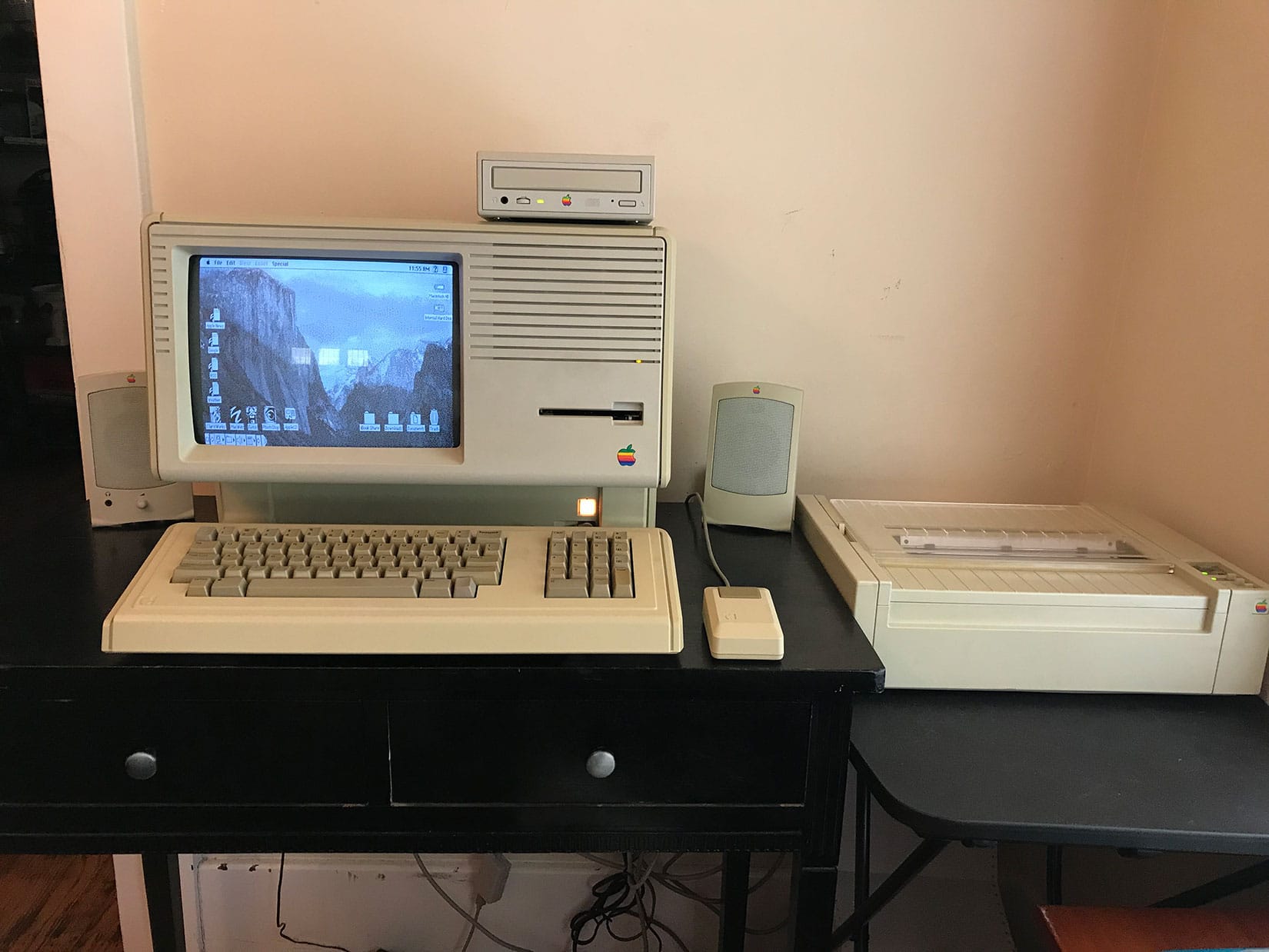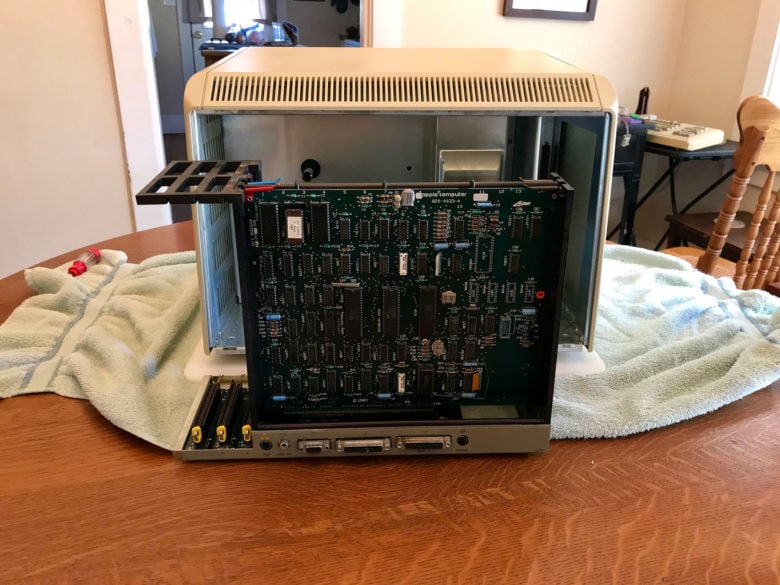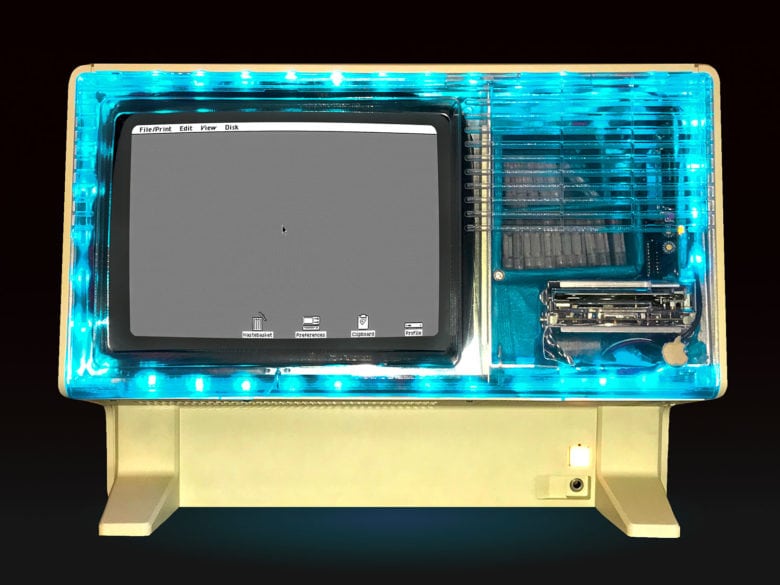The Apple Lisa computer was a colossal failure. It was also the most important machine in personal computing history.
You can try to argue that last claim with John McLearan. He believes it. And he offers his restored Lisa 2/10 — loaded with modifications to make it a 21st-century workhorse — as proof that the computer’s reputation needs a considerable upgrade.
“I think it’s so exciting to work on a Lisa,” McLearan, a computer repair technician from Illinois, told Cult of Mac. “The Lisa did things that were unheard of during its time. It makes the Macintosh from that era look like an oversized toy. If the Lisa had not come along, Apple would look very different today.”
Apple Lisa, thank you for your contributions
Apple began developing the Lisa in 1979 as a modern business alternative to the Apple II, the company’s first mass-produced computer that, to this day, is beloved globally. Fans still fete the Apple II each year during KansasFest, a festival dedicated to the computer.
The Lisa, named after the daughter of Apple co-founder Steve Jobs, does not enjoy such enduring reverence. One of the first commercial computers with a graphical user interface, the Lisa moved computing forward. Other advances included multitasking, a built-in screen saver, and an operating system with protected memory. It also was the first consumer machine with a mouse and the ability to copy and paste information.
But the computer’s slow processor could not keep up with the Lisa’s laudable features. Users complained of system crashes and an inadequate software library. Worst of all was the price. The first Lisa model retailed for about $10,000.

Photo: John McLearan
Even though newer models rolled out at lower prices, Apple users by then had flocked to the faster, cheaper and easy-to-use Macintosh.
Apple sold only about 10,000 machines over the Lisa’s three-year life. As one of its last acts, the Lisa was the platform used by Apple to develop the original Macintosh software.
An Apple Lisa fan base
Apple does little to celebrate the Lisa’s history, opting instead to keep looking forward. The machine’s history is preserved by self-styled docents like McLearan, who collect hardware, open museums and keep vintage machines running.
McLearan is, by his estimate, one of maybe 200 people worldwide who are devoted to keeping Lisa computers alive. There is even a Lisa website with a Lisa 2 computer used as the host server.
While people may have been reluctant in the 1980s to pay thousands of dollars for the Apple Lisa, it has its place in the heart of vintage tech collectors. A working Apple Lisa can fetch big dollars on eBay these days. In 2017, an original Lisa sold at auction for more than $50,000.
McLearan bought a $500 junker off eBay and restored it enough to “where it didn’t catch fire when you plugged it in. I wanted a little more RAM so I could have more fun.”
His research led him to VintageMicros, a company that specializes in obsolete hardware with an inventory of spare parts. He began corresponding with the business owner, John Woodall, who also custom-builds boards for Apple II, Apple III, the Lisa, Macintosh and even the NeXT computer.
Custom parts for vintage computers

Photo: John McLearan
McLearan added a custom hard drive emulator that works off two preprogrammed Compact Flash cards, the type of storage cards photographers use on DSLR cameras.
His Lisa also runs fast. The original Lisa’s CPU ran at 5 MHz; McLearan’s CPU clocks in at 18 Mhz. The original Lisa 2/10 came configured with 1 MB of RAM; his packs 12 (and a SCSI startup disk).
“It is the easiest computer to work on,” he said. “It is extremely upgradable. You just undo two little knobs on the back and pull out the Lisa cart assembly.”
VintageMicros refurbished the computer’s power supply, upgrading it to support larger power draws for the additional upgrades. One upgrade includes a digital-to-analog converter so McLearen can play music. Another makes use of a Raspberry Pi, which he installed to turn a Wi-Fi connection into a dial-up internet connection that the computer can understand.
Some small fans on the inside cool off the heat coming from all the upgrades.
Like driving a classic car
The project did not stop with the internals. Woodall sent Lisa panels off to get 3D imaging, then converted the files into CAD files for 3D printing. He then made clear plastic panels, giving McLearan’s machine the look of an Apple “clear shot” prototype.
He added an LED strip on the inside that changes colors, including one that resembles the Bondi Blue of the iMac G3.

Photo: John McLearan
McLearen says he does a good percentage of his personal computing on this souped-up Lisa. His favorite of the modern tools is the iPad Pro, but he uses the Lisa for spreadsheets and other tasks related to his business.
“When using my iPad Pro I know I will have a nice stable experience with a device that can perform any task I ask of it,” he said. “When driving a classic car you know it isn’t the car you’ll drive to the grocery store. When you sit in the driver’s seat you can feel its engine roar. You get the sensation of experiencing something completely different. Its design causes heads to turn. Its gas mileage isn’t that good but you don’t care because it’s a classic and you love it.
“I say this as people relate more to a classic car than a classic computer. I love the Lisa and she brings a smile to my face every time I use her. Nothing else brings me the joy that I get from the Lisa.”


